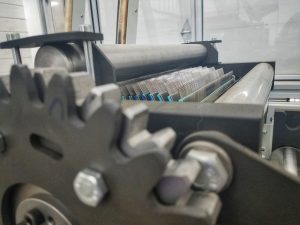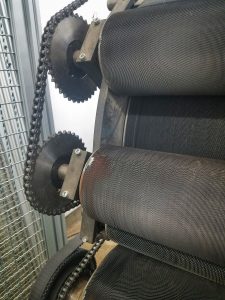After discovering the wetlands wrench of last week, I was incredibly scattered for almost the entirety of Week 4. Though I had yet another busy week, my thoughts kept circling back to the situation on our land and how we were going to work with it.
I was able to get in contact with a wetlands biologist and requested a bid for him to come out and look over our property and do some testing. He and his crew will be coming out this week, and we’ll be paying $1600 for all of this. Ouch. He will be doing some magical biologist stuff and will basically map out our property and the wetlands within it. After this is done, we will (hopefully) have a better idea of where and how we can house livestock and where we will be able to put our vegetable garden. In the meantime, we’re desperately trying to cut down and remove the invasive Hawthorn trees and volunteer Alder trees that have popped up before anyone from Pierce County tells us we can’t. Ha!
My fiance and I have been researching various Pierce County codes and trying to figure out which of them pertain to our particular situation. This is difficult and frustrating, as neither of us are particularly fluent in government-speak, and there seem to be a lot of conflicting codes out there related to farming/agriculture, land ownership, and critical wetland areas. Rene Skaggs of the Conservation District has been of some help in steering us in the right direction.
Beyond the wetland complications, I’ve been trying to talk to as many small business owners in the yarn/fiber industry as I possibly can, as well as owners of local yarn shops. Sunday I was invited to go meet and visit Elsa, the other half of the Alpaca farm located down the road from our little farmhouse. Elsa is a crafts-person and also does all the shearing of the alpacas on the farm in addition to running an Alpaca fiber based business. She doesn’t make yarn, but rather an Alpaca-fiber based fabric that she sells and also uses to make clothing and other wearables. She and I spoke at length about animal husbandry, shearing practices and where/how I could learn, as well as small business ownership and the ins and outs of the craft show circuit. Meeting with her was incredibly valuable and I am excited for spring and summer and the opportunity to learn the art of shearing from her.

Monday, classmate Katie and I drove out to the west coast of Washington state to Montesano to meet Lynn Lipski, the owner of Olympic Yarn and Fiber. Lynn also specializes in Alpacas and has a herd of her own, but she processes Alpaca fiber all the way to yarn. Olympic Yarn and Fiber also processes other clients’ fine wool, alpaca, and other fine fibers into batts, roving, and yarn. Lynn recently launched her own brand of yarn, Lina Yarn. She holds a PhD in Chemistry and uses a lot of chemistry in processing the fibers and yarns.

Tuesday morning was a special training session at the downtown Olympia library for my Enterprise for Equity class. In this training session we were positively overloaded with information about how to do various kinds of research using the library and affiliated databases. All of these research databases will prove to be extremely useful for collecting demographics on our potential customer bases, as well as comparing other companies potentially similar to our own and how well they do in business.